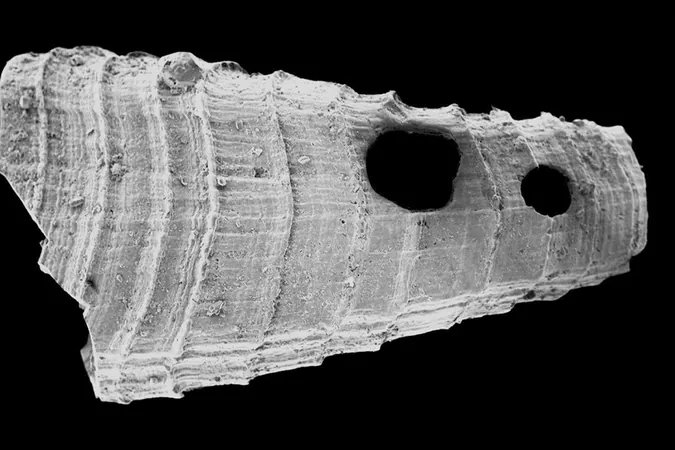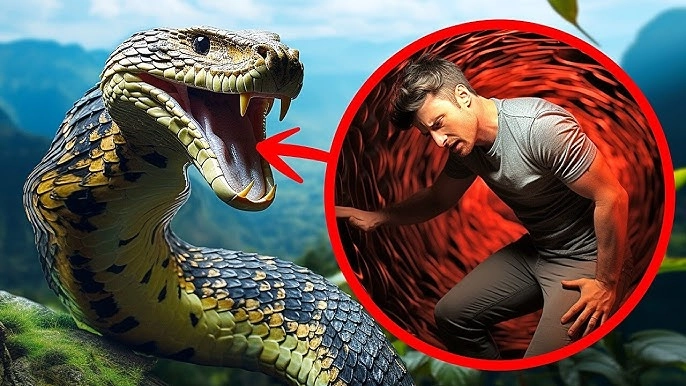
Unprecedented Fossil Discovery Unveils Ancient 'Arms Race' Between Predator and Prey Dating Back 517 Million Years
2025-01-08
Author: Nur
Unprecedented Fossil Discovery Unveils Ancient 'Arms Race' Between Predator and Prey Dating Back 517 Million Years
In a remarkable revelation, scientists have unveiled evidence of a 517-million-year-old evolutionary struggle between predator and prey, suggesting a groundbreaking arms race in the Cambrian oceans of what is now South Australia. This astonishing finding is not just a glimpse into prehistoric life but also a vital clue in understanding the rapid evolution that characterizes this explosive period in Earth's history.
According to researchers from the American Museum of Natural History, the fossil records indicate a complex relationship between a small shelled organism, related to modern-day brachiopods, and an unidentified predator capable of penetrating its hard shell. For the first time ever, this discovery captures the essence of an evolutionary arms race—the ongoing battle between prey evolving stronger defenses and predators developing predatory adaptations.
An evolutionary arms race, as defined by scientists, describes how species influence each other's evolution in a relentless cycle of adaptation. In this ancient case, a marine creature with a sturdy shell faced off against a soft-bodied predator, believed to be a type of worm or mollusk.
Russell Bicknell, a lead author of the study and a postdoctoral researcher in the Museum’s Division of Paleontology, shared the significance of their findings: “While predator-prey interactions have long been recognized as a critical driver of biodiversity during the Cambrian explosion, evidence has been scarce demonstrating how prey responded directly to predation—until now.”
The team conducted a meticulous examination of over 200 fossilized shells from the early Cambrian species known as *Lapworthella fasciculata*. These minute specimens, which range in size from slightly larger than a grain of sand to nearly the size of an apple seed, exhibited a striking number of holes likely caused by a hole-punching predator.
Through their analysis, the researchers discovered a direct correlation between the geological ages of these shells and an increase in their wall thickness—signifying that *L. fasciculata* was fortifying its defenses in response to predation pressures. As the predator refined its ability to puncture through this armor, the prey adapted, resulting in a microevolutionary arms race.
“This groundbreaking evolutionary record illustrates that predation was a key factor in shaping early animal ecosystems, revealing the astonishing speed at which evolutionary changes emerged during the Cambrian Explosion,” noted Bicknell.
The ramifications of this study extend far beyond paleontology. It reaffirms the significance of predator-prey interactions in driving biodiversity and may offer insights into contemporary ecological dynamics and evolution. As we continue unearthing the mysteries of our planet's past, each discovery adds to our understanding of the complex web of life that has thrived for millennia. This fossil finding set in prehistoric oceans not only fills gaps in the evolutionary timeline but also paints a vivid picture of the relentless struggle for survival that shaped the very foundation of life as we know it.
Curious about the ancient world? This discovery is just the tip of the iceberg—what other secrets are still buried in the sands of time waiting to be unveiled? Stay tuned for more incredible findings from the depths of our planet's history!


 Brasil (PT)
Brasil (PT)
 Canada (EN)
Canada (EN)
 Chile (ES)
Chile (ES)
 Česko (CS)
Česko (CS)
 대한민국 (KO)
대한민국 (KO)
 España (ES)
España (ES)
 France (FR)
France (FR)
 Hong Kong (EN)
Hong Kong (EN)
 Italia (IT)
Italia (IT)
 日本 (JA)
日本 (JA)
 Magyarország (HU)
Magyarország (HU)
 Norge (NO)
Norge (NO)
 Polska (PL)
Polska (PL)
 Schweiz (DE)
Schweiz (DE)
 Singapore (EN)
Singapore (EN)
 Sverige (SV)
Sverige (SV)
 Suomi (FI)
Suomi (FI)
 Türkiye (TR)
Türkiye (TR)
 الإمارات العربية المتحدة (AR)
الإمارات العربية المتحدة (AR)